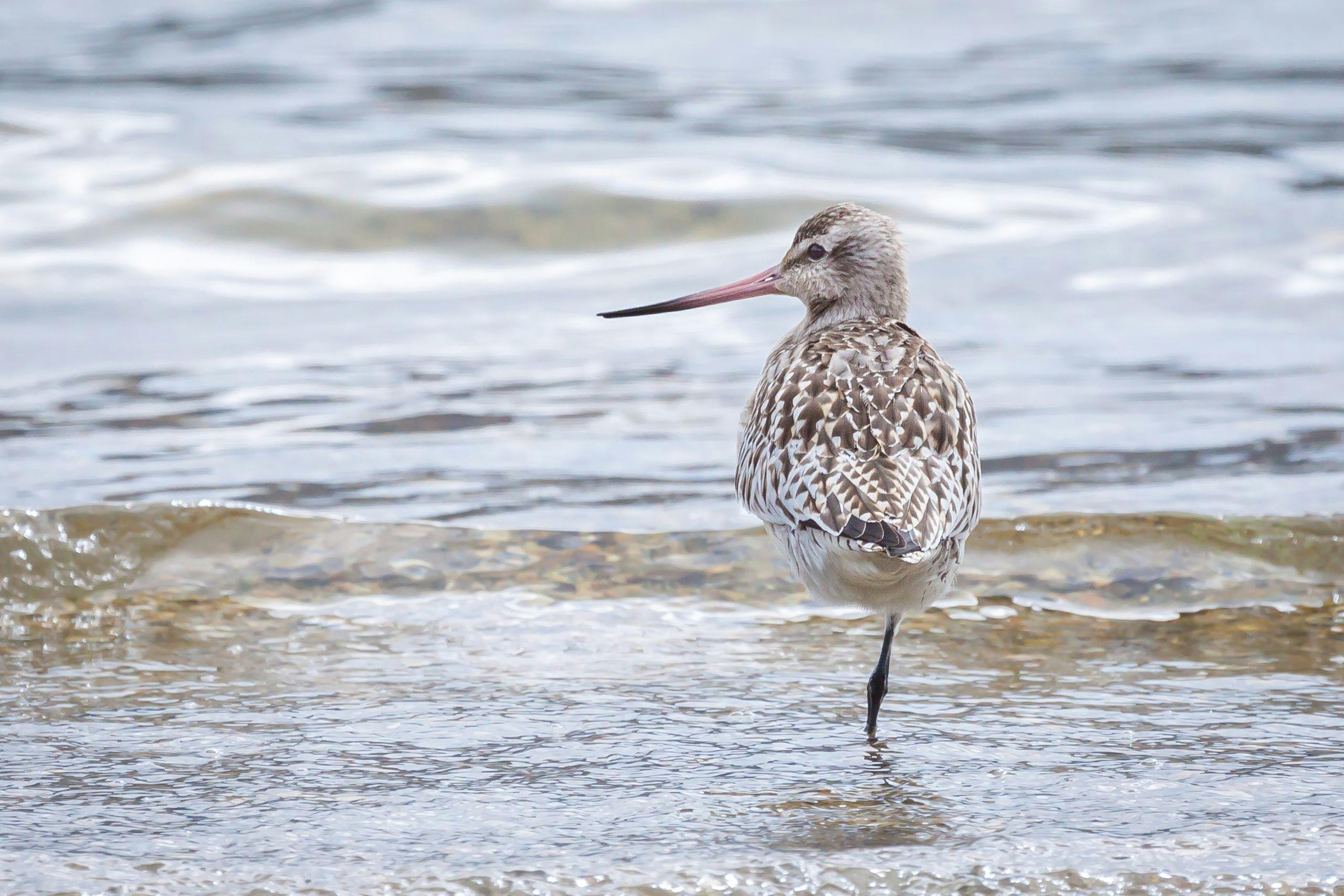Bar-tailed godwits/kuaka spend half their lives in western Alaska and the other half in Australia and New Zealand. Their twice-yearly journeys to each hemisphere are the longest nonstop flights of any non-seabird.
Conservation status
Native species classified as declining.
Features
In general, bar-tailed godwits are predominantly brown on their upper parts and pale below, giving an overall impression of a brown and white mottled look. Males have shorter bills and are noticeably smaller (400g) than females (600g). When in non-breeding plumage, both sexes are hard to tell apart. During breeding, the males gain a bright rufous colouring on the head, neck, breast and belly, with strongly contrasting upper parts of streaked, dark and light brown feathers. A distinctive feature of the godwit is its long tapering and slightly upturned bi-coloured bill which is pink at the base and black towards the tip.
Call
The godwit’s most common call is an in-flight ‘a-wik, a-wik, a-wik’ sound. For most of their time in New Zealand, they are silent while on the ground but immediately before departing for their migration, there is a notable increase in frequency and volume of calls from the birds.
Feathery facts
The godwit’s flight from Alaska to New Zealand
is between 11,000km and 12,000km and takes eight or nine days to travel with an average flight speed of 56km/h. Being a land bird rather than a sea bird means that they do not eat for the entire flight. Migration departures to Alaska are staggered through March depending on each bird’s destination – birds leaving in early March breed in more southern areas of western Alaska while birds leaving in late March breed north of the Brooks Range.
Diet
Godwits predominantly forage on soft intertidal sand and mudflats as individuals or in small groups looking for marine worms, which make up about 70 per cent of their diet. They also eat small bivalves and crustaceans, and can be found probing in wet pasture for terrestrial invertebrates.
Nesting
Bar-tailed godwits breed on upland and coastal tundra in western Alaska from the coastline right up to 200km inland. The nest is a shallow scrape or bowl on the ground lined with lichen. Only four eggs are usually laid but each one is a staggering 11 per cent of a female’s body mass. The advantage of producing these huge eggs is that chicks are fully developed and mobile at hatching. Young birds fledge after 30 days and juvenile birds arrive in New Zealand after their first trans-Pacific flight when only four months old.
Bird spotting tips
Early September to March are the only months you will see bar-tailed godwits in New Zealand. They are widely distributed around the country and can be found on almost any harbour or estuary. They often congregate in very large flocks on beaches and estuaries to roost or rest, making them reasonably easy to find. However, they are wary birds and are difficult to approach closely.








